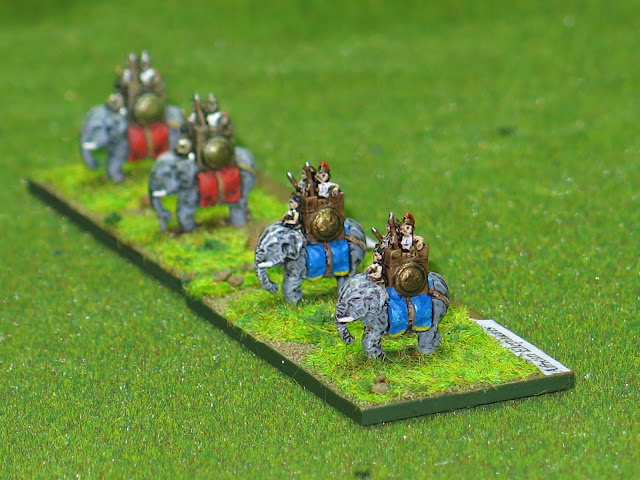I worked hard last week to get my biggest ever submission to the
Analogue Challenge posted for the Tuesday deadline. Once again my wife has been a trooper, giving me the space and time to work on my mad little hobby. And boy did I need the time, two hundred and sixteen 6mm figures is the biggest little project I have undertaken since starting this period and it tested all my stamina before the end.
 |
| A unit of Carthaginian Citizen Infantry |
The models as usual are from Baccus and are listed as Citizen Infantry. They don't wear armour but have a bronze helmet and large oval shields. They are armed with a short sword but their main weapon is the short spear.
 |
| Six units containing 216 figures. |
Painting the shields in particular tested my skill and patience. I wanted the white to really pop but I also needed to use an ink wash to show up the details. In the end I painted the shields white, added the bronze Boss in the center and then applied the ink wash. The final stage involved a 000 tipped brush, a lot of patience, some swearing and a lot of time as I picked out the white highlights. The result looks great, but I was knackered and goggle-eyed by the end!
 |
| Frontal view of the troops |
Now I have probably made a terrible mistake but I was having problems trying to figure out how these fitted into the
To the Strongest! army list for the Carthaginians. In the end I labelled them as African Spearmen but I'm not entirely sure this is right. Some of the research material I have found says the Citizen Infantry were recruited for the first Punic War but not later while other sources are less clear, suggesting these troops were only employed when Carthage itself was under threat. I clearly need to do more research but if anyone can point me in the right direction I'm not above accepting help!
 |
| In column |
Rather embarrassingly I managed to completely miscalculate the number of figures I had painted. I finished these late on Monday evening and should have waited until I had had some sleep before writing my draft post and adding up the numbers for the
Challenge Blog. Twice I added the numbers up coming up with three ranks of nine per base times six bases equals 164 figures or 82 points. But thankfully the eagle eyed Tamsin pointed out that these are ranks of
twelve not nine so I had actually painted 216 figures worth 108 points, Clearly painting so many 6mm figures in one sitting had made me a gibbering wreak unable to cope with basic mathematics.
 |
| From behind, showing the simple details of the backs |
 |
| Another view of the shields |
I'm not sure what I'm painting next. I'm having a few days off for family engagements and I have a busy weekend coming up, so whatever I paint it'll be small (ie not another couple hundred infantry!). I currently have a couple of Carthaginian War Elephants on my desk waiting to be primed, but I also have some Italian AA trucks for my WWII Desert war project waiting to be finished....I'll give it a couple of days and see where the muse takes me.


















































